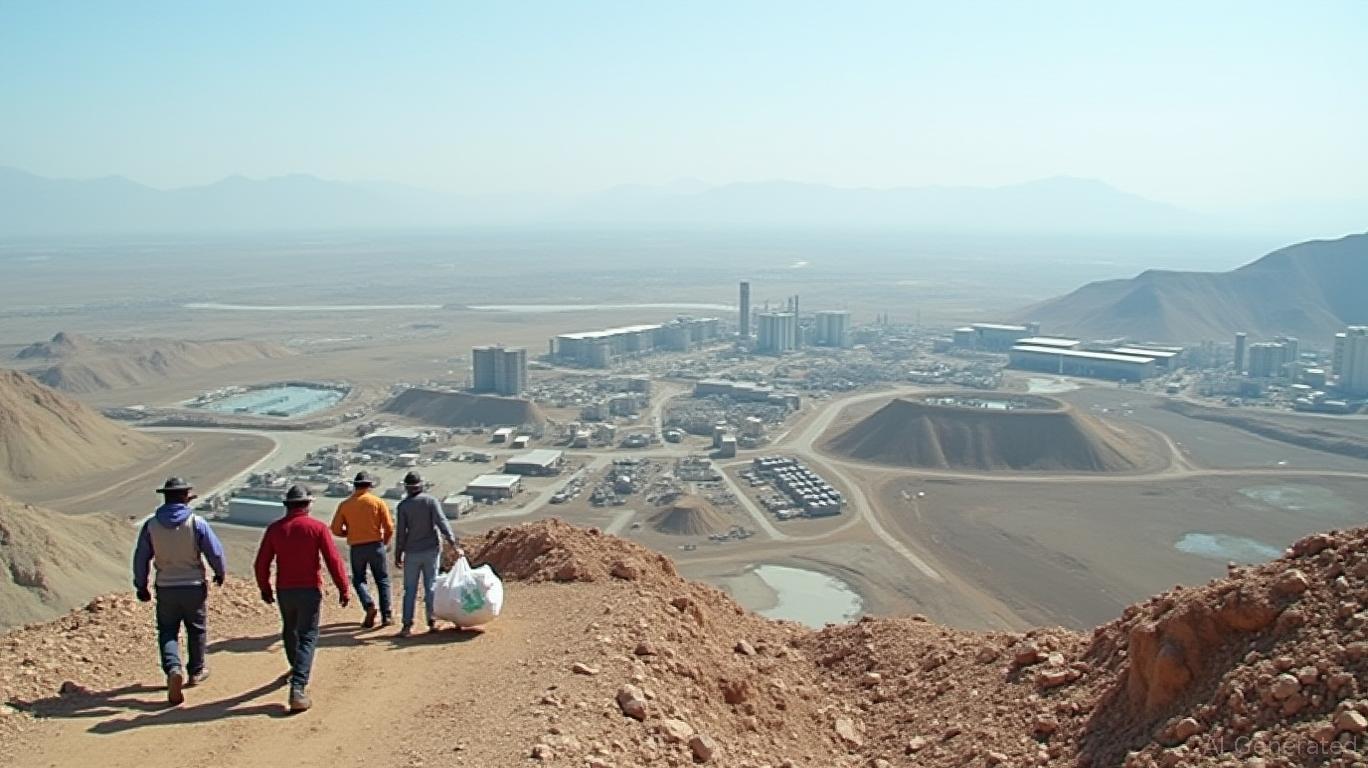Eye in the Sky: Earth Observation Market Soars to $8 Billion by 2033
Friday, Nov 29, 2024 1:00 am ET
The global Earth Observation (EO) market is set to reach unprecedented heights, with Novaspace projecting it to surpass $8 billion by 2033. This remarkable growth is fueled by advancements in satellite technology, increased demand for efficient land monitoring, and urban development initiatives. The market, currently valued at $5 billion in 2023, is expected to grow at a CAGR of 6.92% from 2024 to 2033.

At the heart of this growth are technological innovations driving higher resolution, expanded spectral bands, 3D imaging, and the adoption of cloud computing and artificial intelligence for automated satellite image analysis. These advancements cater to the increasing demand for accurate and timely information from various sectors, including defense, sustainability, and security applications.
The integration of EO services in these sectors is a key driver for market growth. Defense contracts, such as those from the National Reconnaissance Office (NRO) and National Geospatial-Intelligence Agency (NGA), are fueling technological advancements and creating opportunities for subcontractors. The market for defense-related EO revenues is expected to grow by $1.1 billion by 2033, supported by increasing budgets and a push for higher-resolution capabilities to meet real-time monitoring needs.
Regionally, North America maintains its dominance, contributing 44% of global revenues in 2023. However, Asia is expected to experience the fastest growth, projected to account for 23% of the market by 2033. This growth is driven by relaxing commercial domestic policies and rising demand in Asia and Southeast Asia. The Middle East market is also gaining traction by consolidating assets and expanding procurement programs.
As the global Earth Observation market expands, investors are presented with an opportunity to tap into a lucrative and rapidly growing sector. The market's low concentration and technological advancements in cloud computing and AI for automated satellite image analysis ensure that it will continue to attract investments and drive innovation.
In conclusion, the global Earth Observation market is poised for significant growth, reaching $8 billion by 2033. This growth is driven by advancements in technology, increased demand for efficient land monitoring, and urban development initiatives. As investors, it is crucial to recognize the potential in this market and allocate resources accordingly to capitalize on its growth trajectory.

At the heart of this growth are technological innovations driving higher resolution, expanded spectral bands, 3D imaging, and the adoption of cloud computing and artificial intelligence for automated satellite image analysis. These advancements cater to the increasing demand for accurate and timely information from various sectors, including defense, sustainability, and security applications.
The integration of EO services in these sectors is a key driver for market growth. Defense contracts, such as those from the National Reconnaissance Office (NRO) and National Geospatial-Intelligence Agency (NGA), are fueling technological advancements and creating opportunities for subcontractors. The market for defense-related EO revenues is expected to grow by $1.1 billion by 2033, supported by increasing budgets and a push for higher-resolution capabilities to meet real-time monitoring needs.
ACHR, AMBA, APLT, ARWR, ASPI...Market Cap, Turnover Rate...
Regionally, North America maintains its dominance, contributing 44% of global revenues in 2023. However, Asia is expected to experience the fastest growth, projected to account for 23% of the market by 2033. This growth is driven by relaxing commercial domestic policies and rising demand in Asia and Southeast Asia. The Middle East market is also gaining traction by consolidating assets and expanding procurement programs.
As the global Earth Observation market expands, investors are presented with an opportunity to tap into a lucrative and rapidly growing sector. The market's low concentration and technological advancements in cloud computing and AI for automated satellite image analysis ensure that it will continue to attract investments and drive innovation.
In conclusion, the global Earth Observation market is poised for significant growth, reaching $8 billion by 2033. This growth is driven by advancements in technology, increased demand for efficient land monitoring, and urban development initiatives. As investors, it is crucial to recognize the potential in this market and allocate resources accordingly to capitalize on its growth trajectory.










